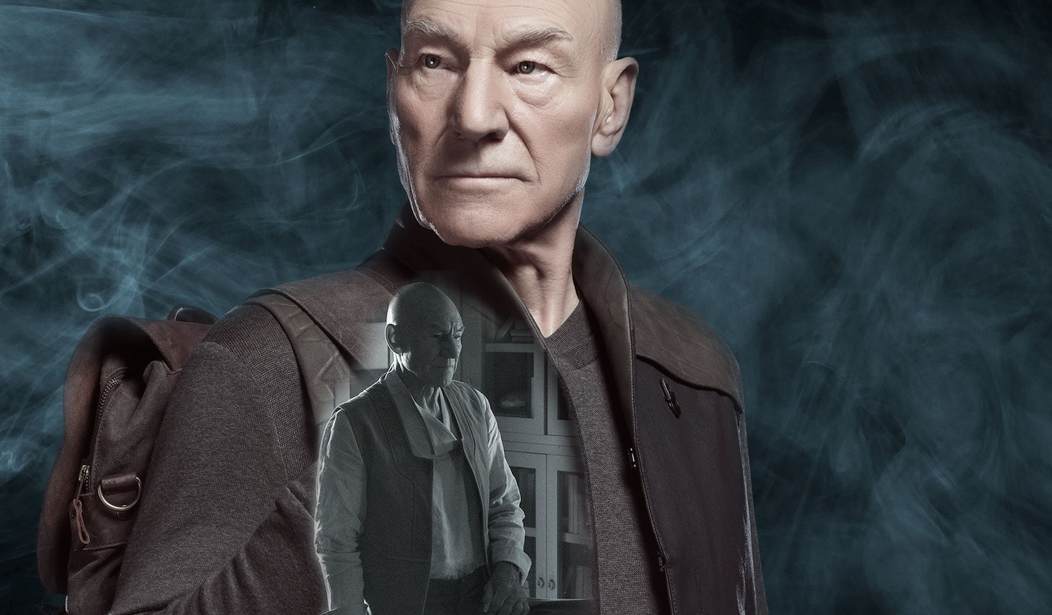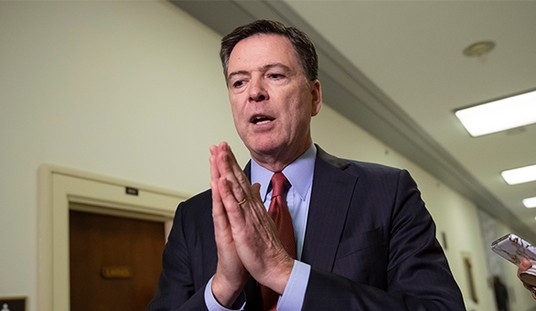The first season of Star Trek: Picard concluded on Thursday, and its finale was something of a mixed bag. The best episodes of the season focused on solving the riddle of what happened to Gene Roddenberry’s once sunny, optimistic United Federation of Planets, and why it had become so xenophobic, controlled by paranoid outsiders, and yet unable to enforce its own laws, themes that Star Trek: Deep Space Nine had explored in the 1990s. (Yes, of course, Picard’s star and writers were quick to credit these plot ideas with the Bad Orange Man in the White House, but had they not spilled the beans, the show would have been pure sci-fi escapism.) But the finale was too often a videogame-like CGI crap-fest, ruining the character studies of the previous episodes, and marred by attempts to wrap up too many plot elements in a single hour. It’s titled “Et in Arcadia Ego, Part 2,” which according to the Star Trek-themed wiki “Memory Alpha,” translates into “‘Even in Arcadia, there am I.’ This is generally interpreted with ‘Arcadia’ meaning a utopian land and the ‘I’ referring to Death, making it a memento mori.” Let’s dive in to explore a bit of what went wrong.
SPOILERS ABOUND. IF YOU’VE JUST STARTED WATCHING THE SERIES BECAUSE CBS ALL ACCESS MADE IT FREE TO STREAM THIS PAST WEEK, READ MY REVIEW OF ITS FIRST EPISODE INSTEAD.
In the 1960s, filming miniature spaceships was a slow and expensive process. This forced the original Star Trek to focus on drama and action-adventure of a decidedly old-school fashion: the show’s second pilot episode, “Where No Man Has Gone Before,” climaxed with a fist-fight between William Shatner and guest-star Gary Lockwood (and their stunt-doubles) that would have been right at home in any Gunsmoke or Bonanza episode. As would the bar brawl at the apex of one of the show’s most popular episodes, “The Trouble with Tribbles.” When interstellar action did occur, it was invariably between the Enterprise, and at the very most, three or four space craft. Another popular episode, “Balance of Terror,” which introduced one of Star Trek’s perennial baddies, the Romulans, featured a single enemy ship, and was patterned after the 1958 WWII submarine movie, Run Silent, Run Deep.
Today though, CGI can create as many spacecraft as the director wants. And in the series finale, Star Trek: Picard broke from its human-level scale to feature an entire armada of Romulan ships warping in to lay waste to Coppelius, the planet housing Dr. Soong and the androids he constructed, due to the Romulans’ fear that they would conjure “the Admonition.” (We’ll get back to that one in a few paragraphs.) And it was all for naught for the viewers, as this fleet of spacecraft looked like something out of a bad videogame. It also seemed unnecessarily gratuitous and silly, since in the original series, it was posited that the USS Enterprise alone could lay waste to an entire planet, and presumably, the Romulan ships were bigger and more heavily armed than the exploration-oriented original Enterprise.
To ratchet up the clichés and silliness, a Federation starship commanded by Will Riker (Jonathan Frakes) appears — Riker tells Picard he was able to immediately return to active duty and order up a starship to save the day. Frakes looked like he too was green-screened into a CGI-rendering of the bridge of a typical Federation starship. If you search around YouTube, you’ll come across several fan-created Star Trek homages, where plywood replicas of the original 1966 plywood Star Trek sets were created, and an old-timer from the original show was talked into making a cameo appearance. That’s exactly what Frakes’ shoe-horned appearance in the finale felt like, in sharp contrast to the moving, pastoral “Nepenthe” episode where Frakes and Marina Sirtis of the original series had meaty guest appearances three episodes back.
“Who Are We Going To Almost Kill This Week?”
One of the ongoing themes of the original season was Picard’s health, and it was eventually revealed that he was suffering from a brain ailment. As the fight between the fleet of Romulans and Picard and Riker winds down, Picard’s health finally begins to fail him, and he realizes his demise is rapidly approaching. When Picard does die, Picard’s season finale milks this for all its worth, with long lingering shots of the leads mourning and passing the bottle to ease their pain. Former Trek writer David Gerrold wrote in his 1973 book, The World of Star Trek that one of the original series’ worst clichés was “Well, who are we going to almost kill this week?”
In “Amok Time” Kirk gets killed—no, he doesn’t; we just think he is for a while. In “The Changling” Scotty gets killed—no, he doesn’t; he gets brought back to life. In “The Apple” Spock keels over after being shot by a poisonous plant—no, he’s immune to its effects.
And in the third season: Kirk gets killed in ‘‘The Enterprise Incident’’—no he doesn’t; it’s just a trick on the Romulans. In “For the World Is Hollow and I Have Touched the Sky” McCoy gets clobbered by a computer—no, not quite. And in “The Tholian Web” Kirk is missing and presumed dead for half the episode. Ho-hum.
Again just as with the others, once is valid, even twice—but more than that and the device becomes recognizable, repetitious, and worn-out. We know that these characters are not going to be killed; they’re the heroes. So stop cheating us and start telling us some real stories.
The almost-death is a fantasy, a fairy tale. We kill the hero and then double-talk him back to life. A real drama would work within the conventions of the format, exploring the relationships that are created thereby and confronting the conflicts that develop.
And of course, Picard isn’t going to die — his name is right in the show’s title, and CBS has already announced a second season! As The Onion AV Club’s Zack Handlen writes, in a wrap-up appropriately titled, “All is resolved in an underwhelming Star Trek: Picard finale:”
They save the only real twist for the end. Last week, I was wondering how the show would continue with a second season, given how much of the emotional drama of the last few episodes has focused on Picard’s fatal brain problems. This week, I slapped my forehead halfway through the hour and realized they’d just dump him into the “golem” Soong was planning to move his own consciousness into. Which is of course what happens, albeit after the episode attempts to wring as much pathos as it possibly can out of a beloved fictional character’s “death.” It would be shameful if it wasn’t also hilarious; Picard gives his all to save the universe yet again, and in the end, dies in the arms of a character we met a few weeks back while a bunch of other characters we barely know stare on in distress. People get drunk about him dying, and then oh hey, turns out we’ve got a spare.
“Underwhelming” also sums up the denouement of one of the series’ several ongoing conspiracies, “the Admonition,” described thusly at “Memory Alpha:”
The Admonition was a preserved, encoded message on the planet Aia, placed some 200,000–300,000 years ago by the synthetic lifeforms who caused the extinction of organic life on that world. Documenting the development and evolution of the synthetics, and how organics caused their own destruction by seeking to destroy their creations, the Admonition served as a beacon to other synthetic lifeforms, offering protection against “oppression”, even if it means the elimination of organic life. It contained an encoded frequency, through which they can signal the “alliance of synthetic life”.
Since the Admonition was designed for synthetic minds, any organics attempting to access it could be driven to madness, self-harm, and suicide. Hundreds of years before the 24th century, the Romulans discovered the Admonition while investigating the mystery of the Eightfold Stars. Mistakenly believing the Admonition to be a warning against synthetic life, the Romulans formed the Zhat Vash, a secret group dedicated to eliminating all synthetics everywhere.
When Star Trek: Picard first debuted, seemingly a lifetime ago in pre-Coronavirus lockdown early 2020, this was the sort of stuff that led some over-eager Trekkies to speculate that the big reveal would be that the Romulans had created the Borg. In part one of “Et in Arcadia Ego,” Soji and the rest of Dr. Soong’s synthetics are seen building a transmitter to reach the androids behind the Admonition, and it begins to function in Part II just as the CGI Romulan fleet arrive in orbit above Coppelius. So what will come through from the other side? A Borg Cube? An robot on the scale of and grandeur of V’Ger from Star Trek: The Motion Picture? No, we see three CGI metallic tentacles, which look like giant outer space versions of the robotic tentacles used by Spider-Man villain Doctor Octopus. And then Picard convinces Soji to turn off the beam, and the tentacles return to the other side of the galaxy.
That’s it? This plot has been driving every episode one way or another since the beginning of the season, and this is how the writers quickly wrap it up in the space of about three seconds? That’s a pathetic letdown, rather than the big payoff that the darker elements of the series have been building up to.
2020: A Blade Runner Odyssey
While the early episodes of Star Trek: Picard mined the 1983 sci-fi classic Blade Runner heavily for its android machinations (pun intended), the long wrap-up of its final episode cribbed from Stanley Kubrick’s epochal 1968 film 2001: A Space Odyssey. (Previously the inspiration for 1979’s aforementioned stillborn Star Trek: The Motion Picture.) After Picard’s “death,” he wakes up in a futuristic, yet strangely familiar drawing room ala Keir Dullea at the end of 2001, but instead of a black monolith beside him, we see Data, whom Picard first encountered in his dreams at the beginning of the debut episode.
Data tells Picard that they’re both simply in a computerized holding tank, and that Picard will soon wake up with his consciousness implanted in an android body of his own. Once he’s out, Data asks Picard to perform a task for him, telling Picard that if he (Data) is going to truly experience what it’s like to be human, he cannot be immortal. He must experience death. When Picard is back in the real world, Data would like to be unplugged. So after spending the entire season in a quixotic battle for the preservation and dignity of synthetic lifeforms, and then discovering that Data’s consciousness at least is still alive, and could be ported into another one of Dr. Soong’s “Golems,” without argument, Picard performs a euthanasia of Data’s, err, data, pulling out his red, rectangular memory chips in much the same fashion as Dullea unplugged HAL in 2001.
Remember, this is the same captain who wouldn’t program a computer virus into the rescued Borg the Enterprise crew members dubbed “Hugh,” even though it had high odds of eventually wiping out the entire Borg species, the show’s most dangerous enemy; but in an instant, decides to, in effect, kill one of his best friends.
On the other hand, with Data apparently now permanently gone, and with Picard now inside of an android body himself, Star Trek: Picard’s second season has the opportunity to explore plenty of potential “Picard as Data” plot twists. He could get a computer virus that makes him an evil baddie, ala Kirk in the original series’ “The Enemy Within” episode. One of his robotic subsystems could temporarily fail him. An evil race might want to capture and disassemble him. Or not. With any luck, the writers will be smart enough to avoid these earlier Trek clichés, but the conclusion of Star Trek: Picard’s first season doesn’t inspire optimism. Hopefully though, like the first season’s earlier episodes, there will be some decent drama in-between the gobs of meaningless CGI and reconditioned plot ideas.










Join the conversation as a VIP Member